Gortgranard
Houses within 15km of this house
Displaying 81 houses.
Houses within 15km of Gortgranard
Displaying 81 houses.
| House name | Description | |
|---|---|---|
| Carrachor | Carrachor House is named on the 1st edition 6 inch Ordnance Survey map (1836) and Lewis records J. Wright as the proprietor. It was later expanded and by the mid-19th century was held by Joseph C. Wright in fee. The buildings were valued at £16. In the early 20th century Joseph Mitchell and his wife Elizabeth were resident. Joseph Mitchell may have been a relative of the Wrights. The house is still extant. | |
| Gola | Built in 1703 by Joseph Wright son of James Wright and his second wife Mary Slacke (www.thesilverbowl.com). It was the home of the Wright later Woodwright family in the 18th and 19th centuries. At the time of Griffith’s Valuation the Reverend William E. H. Woodwright was resident. The buildings were valued at £25. In 1901, Patrick Callaghan, steward, was resident in Gola. Sir John Banks (1815-1908) was the proprietor. He was a well-known Dublin physican who had married in 1848 Alice Woodwright. Their only child Mary married Willoughby Burrell 4th Baron Gwydyr in 1873. On 25 February 1921 Gola was burnt and subsequently demolished. | |
| Freame Mount | This house was built in 1772 (date stone confirms this) for Charles Mayne, land agent, on the Cremorne estate. According to a website dedicated to the history of the Mayne family, it was named after the second wife of Thomas Dawson, Hannah Freame, granddaughter of William Penn. The house was occupied by William Douglas in the mid-19th century and valued at £24. It was occupied by George John Levis, a bank official, and family in the early 20th century. |

|
| Brandrum | An early 18th century house located on the Cole of Florence Court estate. Early residents were Edward Mayne of the Mount Sedborough family and the Reverend Robert Montgomery, whose mother was a Cole. The house was close to another 18th century Montgomery home Ballyleck. It is named on the 1st edition 6 inch Ordnance Survey Map (1836). The Ordnance Survey Field Name Book states that ‘Brandrim is a delightful residence, there is an excellent house with good offices and gardens attached; the grounds well laid out and well planted’. Lewis records Owen Blayney Cole as the proprietor and he was leasing the property to Thomas Coote at the time of Griffith’s Valuation. The buildings were valued at £35. Brandrum was the home of Hugh Gill Patterson and family in the early 20th century. This house is now a ruin. |
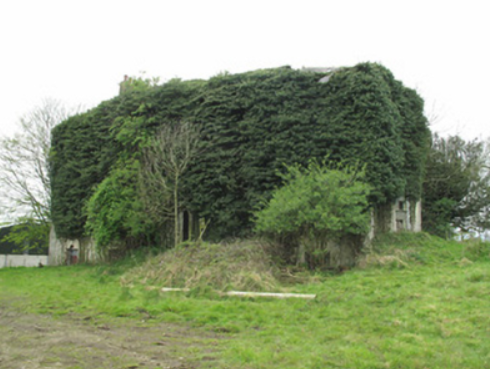
|
| Ballyleck | Alexander Montgomery, Member of Parliament for county Tyrone, had this house built in the mid-18th century. By the early 19th century Ballyleck had become part of the estate of the Westenra family, Barons Rossmore. The house is named on the 1st edition 6 inch Ordnance Survey Map (1836). Lewis records the Honourable Richard Westenra as resident. He died in 1838. Circa 1860 William M’Keane was the occupier holding the property from Henrietta Westenra. It was valued at £36. A few years later it had become the home of Jesse Lloyd , a brother of Lady Rossmore. This house with extensive outbuildings was the home of Lucius O’Brien and family in 1901 and of William Black and family in 1911. This house is still extant. |

|
| Newbliss | This house, now demolished, on the outskirts of the town of Newbliss was the home of the Ker family who held it in fee. Built in 1814, Andre A. M. Ker was the proprietor in the mid-19th century when the buildings were valued at £70. Mary Isabella Murray Ker was the occupant in the early 20th century with over 200 acres of untenanted land. | |
| Clonamully | This house, sometimes spelt Clenamully, was the home of the Fiddes family in the 19th century. Members of the Fiddes family were land agents. Located on the Lewis, formerly Scott estate, it was named on the 1st edition 6 inch Ordnance Survey map (1836) and had a walled garden. The Reverend James Fiddes was rector of the parish of Drumsnat. Edward Fiddes who inhabited the house in the 1830s and at the time of Griffith’s Valuation was the Reverend James’ son and agent to the Rose estate. Edward died in 1868, aged 78, and was buried in Drumsnat graveyard. In 1901, Joseph Fiddes, land agent, was the occupier and in 1911 four of his children were living in the house. The original house has had additions and alterations. |
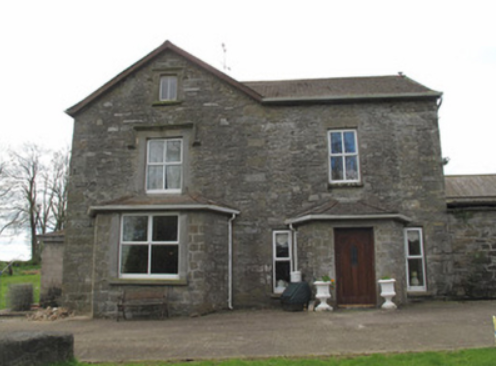
|
| Tonnagh House | Lewis records Captain C. Dawson as the proprietor of ‘Tanagh’ in the 1830s. Charles Boyle held the property in fee at the time of Griffith’s Valuation when the buildings were valued at £17.5.0. Home of a branch of the Lucas Clements family in 1901 and of Dr Arthur Robert Moore and family in 1911. The National Inventory of Architectural Heritage states that this house has also been an army barracks and seminary (1948) and that it is now used as an outdoor education centre. http://www.tanaghoutdooreducation.com/ |
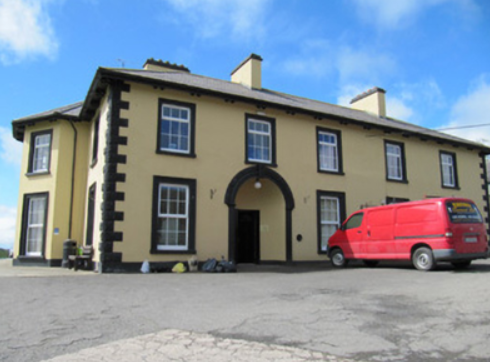
|
| Bessbrook | The original house with a mill was located in the townland of Roosky. The present house in the neighbouring townland of Killygorman, is not marked on the 1st edition 6 inch Ordnance Survey Map (1836) but by about 1860 it was valued at £35, occupied by David Hamill and held from the Reverend Quinn and others. The Hamills were still resident in the early years of the 20th century. Family members were described as farmer and mill owner. | |
| Hilton Park | According to Shirley it was originally called Maddenstown, changed circa 1780 to Hilltown or Hilton. The Reverend Samuel Madden purchased the estate in 1734 and built the house. It was badly burnt in 1803. In Griffith’s Valuation the buildings were valued at £110 and held by John Madden in fee. The house was extensively enlarged in the 1870s for John Madden by William Hague. The gardens were designed by Ninian Niven. Hilton Park is still the family home of the Madden family where they offer luxury accommodation and authentic country house food, see http://www.hiltonpark.ie/ |
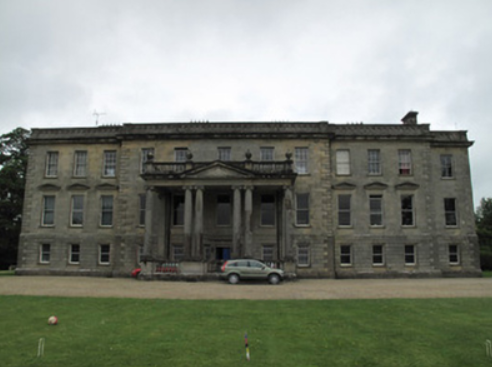
|
| Lakeview/Clonoony House | On the Griffith’s Valuation map Lakeview House is the same building as that named Clonoony House on the 25 inch map (surveyed 1908). Lakeview was occupied by David Smyth from at least the 1830s and held by him in fee. The buildings were valued at £20. It was the home of the Garland family in the early 20th century. A roof extension and portico have recently been added to this house. | |
| Glynch/Glinch House | Glinch Lodge is marked on the 1st edition Ordnance Survey map (1836). Sources in the National Library record the will of J. Rogers of Glinch Lodge, 1827. Lewis records J. Thompson as the occupant in the late 1830s. A new house with portico entrance was built slightly to the south in the mid-19th century and valued at £50 in Griffith’s Valuation. It was occupied by Robert Lowry and held from Richard Mayne. At some time in the mid-19th century ‘Glynch’ House was the residence of Charles Stuart Adams who married Eliza McMahon of Rockfield, county Monaghan in 1850. Home of Felix Keirns and his family in 1911. |

|
| Ballynure House | Built in the late 18th century, this house was originally the home of the Forster family. Described in the Ordnance Survey Field Name Book as a ‘handsome modern structure’. Griffith’s Valuation records William Forster as the occupant holding the property in fee. The buildings were valued at £50. The Haire Forsters lived here at the beginning of the 20th century but by 1911 were leasing Ballynure to William Maxwell Scott Moore, Resident Magistrate. This house is now a ruin. |
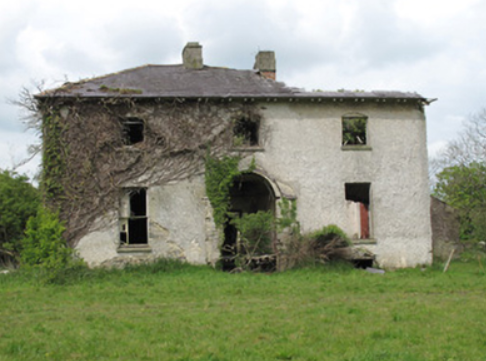
|
| Slacksgrove/Hollywood House | Slacksgrove is marked as a long building close to the shore of Slacksgrove Lake on the 1st edition 6 inch Ordnance Survey map (1836). It was named after the family who lived there in the 18th century. John Slack of Slacksgrove was High Sheriff of county Monaghan in 1758. Lewis records R. Jackson as resident at Slacke’s Grove in the 1830s. A later square house on the same site, known as Hollywood House, was built before Griffith’s Valuation of the mid-19th century. This house with an extensive farmyard was valued at £36. It was occupied by James Fiddes who held the property from Thomas Coote. Edward Fiddes and his daughter lived in the house in the early 20th century. Only the outbuildings of Hollywood House still remain. | |
| Mont Louise | Home of the Evatt family in the 19th century, R. Evatt was resident in the 1830s. Samuel Evatt was the occupier circa 1860. He held the property in fee and the buildings were valued at £9. Home of George F. Evatt at the beginning of the 20th century. A building is still located at this site. | |
| Lisnaveane House | Home of the Waddell family, it is named on the 1st edition 6 inch Ordnance Survey map (1836) and possibly dates from the late 18th century. It was altered in the 19th century and the yard buildings were extensively extended. At the time of Griffith’s Valuation the buildings were valued at £16. William and Charles Waddell were recorded as the occupants holding the property in fee. Home of Alfred Waddell and family in the early 20th century. |
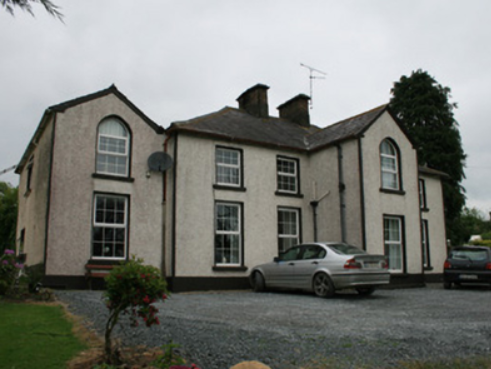
|
| Drummaconor | A building is marked at this site on the 1st edition 6 inch Ordnance Survey Map (1836) and named on the 25 inch map (surveyed in 1908). In the mid-19th century the house was occupied by John Fawcett who held the property in fee. The buildings were valued at £12. It was at a Halloween ball in this house in 1871 that the dresses of two daughters of Sir William Wilde caught fire causing their deaths a few days later. The ball was hosted by a local bank manager Mr Reid. James Treanor and his family were resident in the early 20th century. He was a farmer and local magistrate. This house is still extant and has functioned as a guest house. For photo circa 1905, see https://madaboutmonaghan.ie/kilmore-and-drumsnatt | |
| Lisnaroe | This house was situated very close to the border with county Fermanagh. On the 1st edition Ordnance Survey map (1836) extensive gardens and some plantations are evident surrounding this house. It is described in the Ordnance Survey Field Name Book as ‘a good dwelling house’, the residence of Nicholas Ellis, agent to Sir Thomas Barrett Lennard. Ellis was still living there at the time of Griffith’s Valuation when the buildings were valued at £20. The Bamford family appear to be resident at the beginning of the 20th century. This house no longer exists. | |
| Mount Salem | Mount Salem situated on the Barrett-Lennard estate was marked on the 1st edition 6 inch Ordnance Survey map (1836) and on the later 25 inch map. It was located close to the border with county Fermanagh, just west of the town of Clones. The Reverend Adam Averell, a Methodist minister, died at Mount Salem on 10 January 1847, aged 93. Griffith’s Valuation records Amelia J. Conts as the occupant, holding the property from James Gregg. The buildings were valued at £13. In the early 20th century the McKenna family were resident but the house is now demolished. | |
| Salem Cottage | Located on the Barrett-Lennard estate, valued at £10 in the 1850s and occupied by James Gregg. James Gregg, farmer, of Clondregole, a townland adjacent to Mullanamoy, died on 15 September 1896 (NA, Wills and Administrations, 1897). A building is still extant at this site. | |
| Ferney Hill | A house at this site was valued at £10, located on the Barrett-Lennard estate and held by Mary Jameson at the time of Griffith’s Valuation. The National Inventory of Architectural Heritage dates the present house circa 1890. Mulligan writes that it was built for a town merchant Mr M. Maguire. |
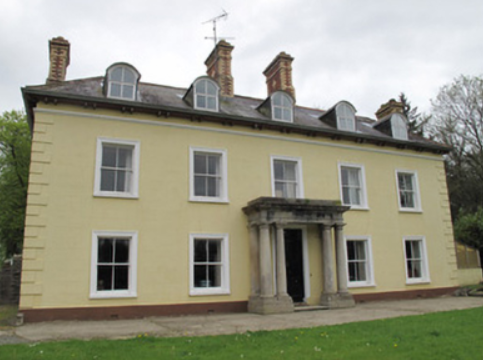
|
| Cloncurrin House | This house was not built at the time of the 1st edition 6 inch Ordnance Survey map published in 1836. At the time of Griffith’s Valuation in the 1850s it was occupied by Francis Fitzgerald who held the property from Sir Thomas Barrett-Lennard, when it was valued at £25. Occupied by John A. Moore in 1901 and still in use as a residence. |
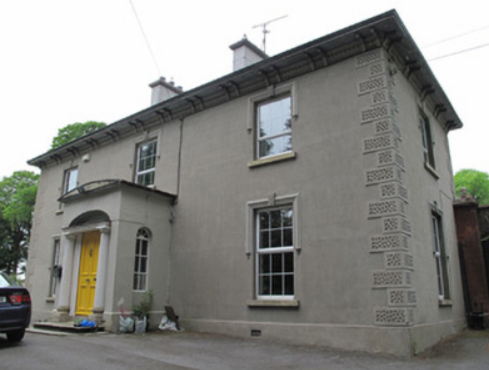
|
| Drumard | The Ordnance Survey Field Name Book states that a house in Burdautien was the residence of Cockran, agent to the Madden estate. The National Inventory of Architectural Heritage dates the house circa 1810. Griffith’s Valuation records William Cochran as the occupier holding the property in fee. It was valued at £30. In the 1860s Drumard appears to be leased by William Cochran to a family named Elliott. Michael Elliott died at Drumard in 1872. The house is still a residence. |
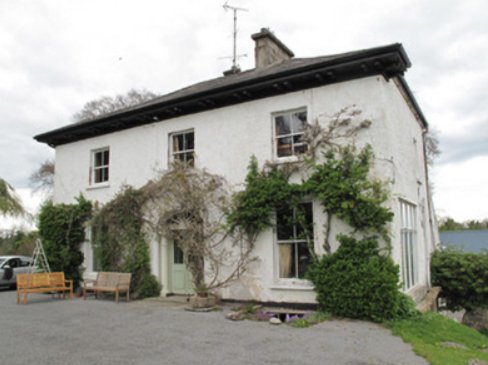
|
| Ashfield | This house located on the Barrett-Lennard estate is marked on the 1st edition 6 inch Ordnance Survey map. James G. Smyth of Ashfield, Clones, was a subscriber to Lewis ‘Topographical Dictionary’ in the 1830s. Valued at £10 Jane Smith was the occupier at the time of Griffith’s Valuation. A house is still located at this site. | |
| Munnilly House | This house is marked on both the first edition 6 inch Ordnance Survey map and the 25 inch map but the building no longer exists. It was the home of the Shegog family. It was situated on the Barrett-Lennard estate and in the mid-19th century was valued at £14 and occupied by William Shegog, born 1824. He was the eldest son of George Shegog, a Justice of the Peace and paymaster of the Fermanagh Militia and Margaret Hamilton. George was the son of John Shegog of Mount Carmel and the family came to Ireland in 1760 from Lubec, Lower Saxony. | |
| Drumcru | A building was located at this site on the Barrett-Lennard estate at the time of the 1st edition Ordnance Survey map (1836). Griffith’s Valuation records the house valued at £11 and occupied by Mary Renwick. A house surrounded by a complex of outbuildings is still located at this site. | |
| Teehill Cottage | The National Inventory of Architectural Heritage dates this house circa 1820. It was built on the Barrett-Lennard estate before the nearby Ulster Canal was constructed. Valued at £10 at the time of Griffith’s Valuation it was occupied by Henry Brown who held it from Thomas Robinson. Home of Edward Scott at the beginning of the 20th century. |
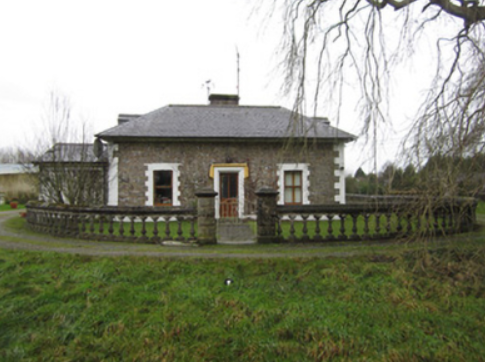
|
| Clonboy | Located on the Barrett Lennard estate, on the outskirts of Clones, this house was built in the latter half of the 19th century. It is not mentioned in Griffith’s Valuation and was the home of the Pringle family. Many members of this family were solicitors. In the mid-20th century it became the home of the Bishop of Clogher. |
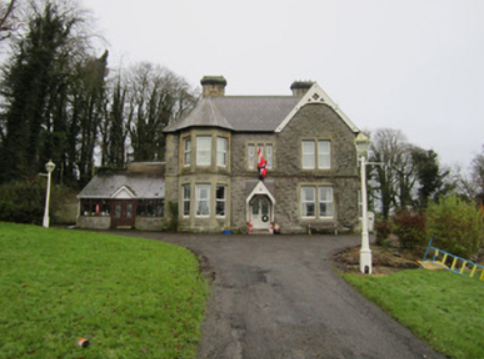
|
| Cloncallick | Built close to Munnilly Lough on the Barrett Lennard estate post Griffith’s Valuation as the building at this site at the time was only valued at £8. It was occupied by Joseph Moorhead. This house has out buildings with a date stone of 1865 and there is a gate lodge at the entrance gate. The Moorehead family were still resident in 1901 and 1911. |
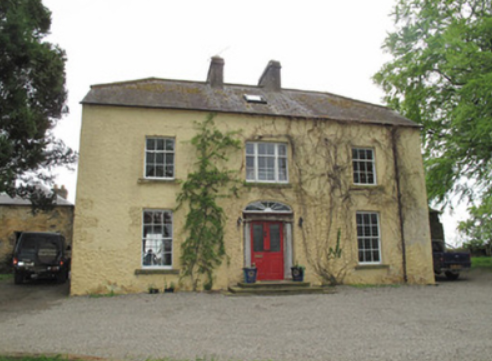
|
| Clonkeen Cottage | This house was not built at the time of the first Ordnance survey in the 1830s. It was located on the Lentaigne estate just north of the town of Clones. William Tugman was the occupant at the time of Griffith’s Valuation when the house was valued at £16 and held from Samuel Nicholl. A building still occupies this site. | |
| Scarvy House | Scarvy was the home of Major Campbell Graham in the 1830s. About this time the original house, which is marked on the 1st edition 6 inch Ordnance Survey Map (1836), was replaced by a new one. The Ordnance Survey Field Name Book records ‘Near the centre of the townland there is a good house with large orchards, gardens etc belonging to the proprietor but it is going to be replaced by a larger one near the same spot which is now building.’ By about 1860 the buildings were valued at £38 and held by Lydia Campbell from Thomas de Burgh. Occupied by the Duggan farming family in 1901. Not occupied in 1911 but still held by Colonel de Burgh. |
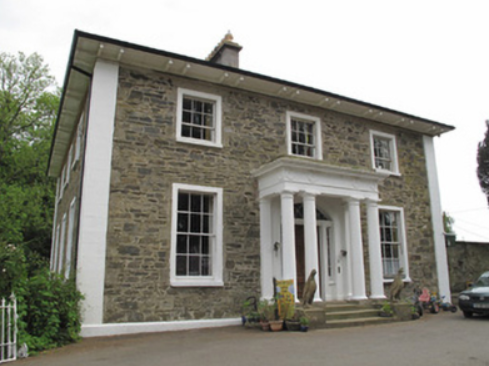
|
| Fairfield | Fairfield was the birthplace of the Reverend John Richard Darley in 1799 who became Bishop of Kilmore in 1874. Facing the shore of Inner Lough it is named on the 1st edition 6 inch Ordnance Survey Map (1836). The Field Name Book states that it was the property of Lord Cremorne let to the former proprietor Mr Corry. Griffith’s Valuation records Lord Cremorne as the occupier holding it in fee. The buildings were valued at £23. By the early 20th century this house was no longer in use. The site is now surrounded by a forest. | |
| Glenburne Cottage | Located on the outskirts of the village of Rockcorry on the Cremorne estate, Samuel Lewis in the 1830s refers to ‘Glenburie Park’ as the residence of C. Stewart Corry. Rebecca Murray was the occupant at the time of Griffith’s Valuation circa 1860 when the buildings were valued at £25. Home of the McFadden family in the early 20th century, no longer extant. | |
| Killycoonagh House | Killycoonagh, located on the Forster of Ballynure estate, is marked but not named on the 1st edition 6 inch Ordnance Survey Map (1836). The Ordnance Survey Field Name Book records the house as the residence of the sister of the proprietor Forster of Ballynure. By about 1860 the buildings were valued at £20 and the occupant was Anne Forster. It appears to have been still in the possession of the Forster family in the first part of the 20th century, although it may have been leased out. |
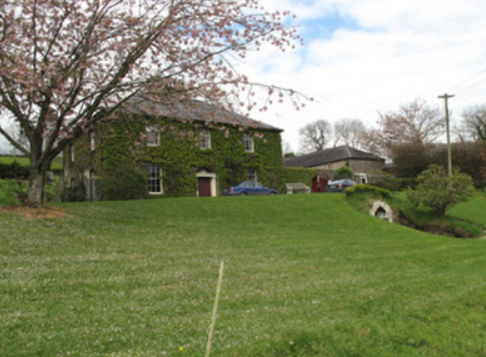
|
| Anlore Cottage | In the mid-19th century Anlore Cottage, in the village of Anlore, was occupied by Jason Crawford and valued at £10. It was held from William Forster. A building is still located at this site. | |
| New Park | A house named on the 1st edition 6 inch Ordnance Survey Map (1836), it was occupied by Dacre Hamilton in the 1830s. Home of Thomas Atkinson in the 1850s, valued at £10 and held from Mary Elizabeth and Charlotte O’Brien. Home of the Carleton family in the early 20th century. | |
| Forest View | This house is named on the 1st edition 6 inch Ordnance Survey Map (1836). In the mid-19th century it was occupied by Thomas Dawson and held from Lord Cremorne. The buildings were valued at £12. Partial remains are still visible at this site. | |
| Camla | Described by Bence Jones as a late Georgian house of one storey over a high basement, situated close to Rossmore Park. Lewis records Lieutenant Colonel Henry Westenra as resident. He left the property to his nephew the 3rd Baron Rossmore. At the time of Griffith’s Valuation occupied by Jesse Lloyd, Lord Rossmore’s brother-in-law, who soon moved to another Rossmore property nearby, Ballyleck House. The buildings were valued at £85 and a steward’s house was also located in this townland. By 1906, the buildings at Camla were valued at £55 with 118 acres of untenanted land. Occupied by James Pollock, land steward in 1901 and Fred Millard, estate agent, in 1911. Camla became the home of the 6th Lord Rossmore after World War II. It was sold in 1962. The building has been demolished and the site is now a green field. | |
| Annaghmakerrig | Annaghmakerrig, now the Tyrone Guthrie Centre, was built in the first decade of the 19th century on the site of a house known as Leesborough, which was the home of the Lee family in the 18th century. In 1802, the property was leased in perpetuity to Dr John Moorhead, a local doctor. Eventually inherited by Martha Moorhead, who married William Power in 1859. William, the son of Tyrone Power, a well-known Irish actor, was knighted in 1865. In 1906, Sir William J.T. Power occupied the mansion house with a rateable valuation of £86.10s. One of William and Martha’s daughters, Norah Power, was the mother of Tyrone Guthrie and it was through his mother that Tyrone inherited Annaghmakerrig. When he died in 1971 he left the house to the Irish State for the benefit of artists, see http://www.tyroneguthrie.ie/about/centre. |
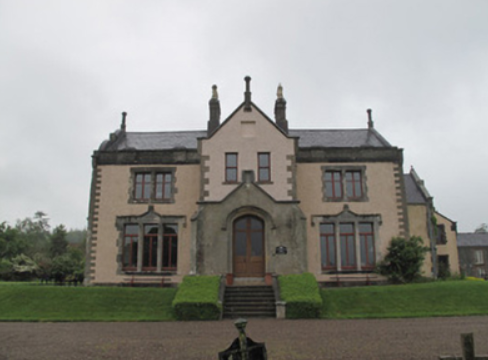
|
| Selloo | A building at this site is marked on the 1st edition Ordnance Survey map (1836) and named on the 25 inch map. In 1853 Selloo described as a 'convenient residence, placed in an ornamentally planted demesne, and also a corn mill, kiln etc' was advertised for sale in the Encumbered Estates Court by Joseph Whitsitt. This was the home of the Pringle family in the mid-19th century, valued at £18 and held in fee by William Pringle. The Hunter and Deering families occupied the house in 1901 and 1911 while Thomas A. Pringle was the landholder. It appears to be currently extant. | |
| Drumbrean Cottage | A late 18th century building, still in use as a residence. Possibly used as a manse house in the mid-19th century when it was the occupied by the Reverend Richard Ross, who held it from the Murray Ker family. |

|
| Drumbrean | This house no longer exists. Lewis records it as the property of T. Phillips and Griffith’s Valuation records Thomas Wright as the occupier, holding from Thomas Phillips. Phillips held the property on a lease renewable for ever from Andre Murray Ker (OS Field Name Book). Thomas Phillips married Mary Martha Emma Whitcombe. | |
| Minore | Named on the 1st edition 6 inch Ordnance Survey map (1836), Lewis records Minore as the residence of Captain ‘Cottnam’. The Encumbered Estates sale rental of 2 June 1853 states that the house was erected by Thomas Cottnam, deceased. The owner at the time of the sale was Mrs Grace Cottnam, widow and she was entitled to a jointure out of the lands. The petitioners were Rutherfords and Brunkers. By the time of Griffith’s Valuation it was occupied by Thomas Leary who held it from Dr Brunker. Home of Hester Parkhill in 1901 and of the Reverend Thomas Brennan, parish priest, in 1911. In more recent times the home of the Clegg family. | |
| Dartrey House/Dawson's Grove | Dawson Grove, later known as Dartrey House, is marked on the 1st edition 6 inch Ordnance Survey Map (1836). It was built about 1770. Lewis refers to it as a ‘noble mansion’. In 1846, the 3rd Lord Cremorne/1st Earl of Dartrey replaced this house with a large Elizabethan-Revival mansion designed by William Burn. A fire in 1856 destroyed part of the house. At the time of Griffith’s Valuation, circa 1860, the buildings were valued at £105 and still valued at the same in 1906. The family honours became extinct in 1933 following the death of the 3rd Earl and the house was demolished in 1946. |

|
| Dromore Lodge | A house situated on the Cremorne estate, close to Dawson’s Grove and almost on the border with county Cavan. The house is named on the 1st edition 6 inch Ordnance Survey Map (1836). It was occupied in the 1830s by Lieutenant Dawson of the Royal Navy. The building was reduced in size by the time of Griffith’s Valuation when it was rated at £6.10.0. John West Finlay was resident. By the early 20th century it has become the home of the gamekeeper on the Dartrey estate. A building is still located at this site. | |
| Lake View (Ematris) | This house looks out on Long Lough. It was occupied by William Richey and valued at £10, circa 1860. Home of the Gillespie family in the early 20th century. |
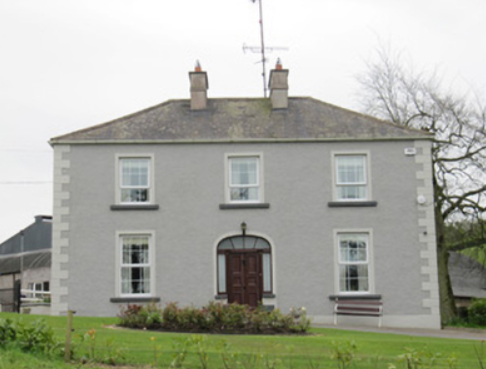
|
| Lisabuck | The Ordnance Survey Field Name Book records that ‘The residence of the Sloans stands near the N. side of the townland, it has been formerly a fine house but it was destroyed by fire about 30 years ago and was never properly rebuilt, it has a very large orchard and garden and is occupied by one of Mr Wright’s tenants.’ The 1st edition 6 inch Ordnance Survey Map (1836) shows some buildings and a large garden located near the shore of Lisabuck Lake. By the time of Griffith’s Valuation Henry Jackson held this townland in fee and the building valued at £3.10.0. was described as a herd’s house. A building is still located on this site. | |
| Lisalea | A house built after the first Ordnance Survey and before Griffith’s Valuation, when the buildings including herds’ houses were valued at £32. It was located on the estate of Andre M. Ker and Richard Wilson was the occupant. In 1901, George Fitzgerald was living in this house with his family as the caretaker for William Edward Ryan. This house is still maintained and occupied. |

|
| Castle Saunderson | A house built in the late 1830s incorporating an earlier building. It was the home of the Saunderson family, occupied by Colonel Alexander Saunderson in the 1850s and held by him in fee; it had a rateable valuation of £54 which had risen to £84 by 1906. This building was unoccupied and derelict in the 1990s. However it is now the location of an International Scouting Centre which opened in 2012. |

|
| Cloverhill | This three storey mansion was built in the early years of the 19th century to the design of Francis Johnston. Attached to the rear was an earlier two storey house dating from 1758. In 1814 Cloverhill was the home of James Saunderson. The Ordnance Survey Field Name Book describes Cloverhill as ‘a neat dwelling house with portico of the Ionic order, is in the centre of the townland, in good order, well planted about good orchards, gardens etc’. Griffith’s Valuation records Mary. A. Saunderson as the occupier holding the property in fee. It had a rateable valuation of £40. Cloverhill passed to the Winter family through the marriage in 1826 of Lucy, daughter of James Sanderson, to Samuel Winter of Agher, county Meath. Their third son, Samuel Winter, born 1834, inherited Cloverhill. He died in 1905 and Cloverhill passed to his nephew, John James Purdon, who died unmarried in 1933. The house was sold in the late 1950s by J.J. Purdon’s nephew, Major John Nugent Purdon. It is now an ivy clad ruin. |

|
| Kilcorran House | This 18th century house has a date stone over the door 1756. In the mid-19th century it was the residence of William Beatty held in fee. Kilcorran remained the home of the Beatty family until at least the mid-1940s when Rowland Beatty/Betty died there. |
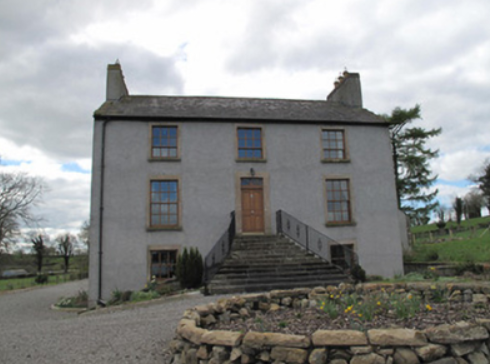
|
| Aghnamallagh House | James A. Mayne lived in this house in the mid-19th century. He held it in fee and the buildings were valued at £22. This was the home of the Elliot family in the early 20th century. The house is still extant. see https://www.geograph.ie/photo/897268 | |
| Thornhill (Drumsnat) | John Johnston is described in the Ordnance Survey Field Name Book as the only gentleman resident in the parish. He lived at Thornhill. On 13 June June 1854, this house and a demesne of about 40 acres was for sale in the Encumbered Estates Court. The owners and petitioners were Mary Johnson, widow, Maria and Jane Johnson and Martha Dudgeon, formerly Johnson. The property was held under a lease (1738) for 999 years. By the time of Griffith’s Valuation Robert Thomson was the occupant holding the property from Owen B. Cole & Olivia Lucas. The buildings were valued at £25. Home of Felix P. Smith and family in 1911. |

|
| Mullynahinch House | The National Inventory of Architectural Heritage dates this house circa 1860. Griffith’s Valuation gave a valuation of £12 for the buildings. John C. M’Adams was resident holding the property from Charles Hopes. Bachelor members of the Temple family lived here in the early 20th century. | |
| Rosefield | A house built in the early 18th century close to Rosefield Lake, it was the home of the Rose family and by the 1760s of Thomas Tenison and later of Alexander Montgomery. By the early 19th century Ralph Dudgeon was the occupant. He is recorded in the Tithe Applotment Book and in Lewis’ Topographical Dictionary. Valued at £16 and the residence of Samuel Mitchell held from the trustees of Captain Slake [Slack] circa 1860. Home of Henry Mitchell and his siblings in the early 20th century. | |
| Rossmore Park | Situated on an elevated site the original house was known as Cortolvin Hills. This is the name that appears on the 1st edition 6 inch Ordnance Survey map (1836) for the house. It was the home of the Westenra family, Barons Rossmore. In 1824, Richard Morrison produced plans to rebuild the house and by the end of the decade William Morrison had taken over from his father. Collins writes that the old house appears to have become the servants’ wing and that the new house had a Jacobean facade. Lewis refers to Rossmore Park as ‘a handsome mansion in the Elizabethan style’. It was remodelled in the late 1850s to the design of W.H. Lynn, after which, Bence Jones writes, ‘the combined ranges boasted of at least 117 windows, of 53 different shapes and sizes’. The buildings were valued at £250 in Griffith’s Valuation and in 1906. During World War II the 6th Lord Rossmore moved from Rossmore Park to Camla House due to pervasive dry rot in the house. It was unroofed after the war and the ruin was demolished in the mid-1970s. | |
| Aghafin House | Built close to the border with county Fermanagh in 1836 and extended in the early 20th century, this house valued at £24 was the home of a doctor, George Phillips, in the mid-19th century. George was a son of Thomas Phillips of Drumbrean House and held Aghafin from the Archbishop of Armagh. According to the ‘Northern Standard’ (2 January 1858) Thomas Phillips died at Aghafin on 28 December 1857, aged 82. George Phillips was living in Ontario, Canada, in 1875. In 1906, Mrs Madden was resident at Aghafin with a rateable valuation of £24. | |
| Etna Lodge | There was a building at this site, close to the border with county Fermanagh, marked on the 1st edition Ordnance Survey map (1836). However Etna Lodge was built post 1836. It was valued at £14 in the mid-19th century, occupied by the Reverend Charles Walsh and held from William Phillips. The Medical Register of 1885 lists Alexander Knight as resident. This building is still extant. | |
| Loughoony | An elongated building facing the lake of the same name and marked on the 1st edition Ordnance Survey map (1836). The National Inventory of Architectural Heritage dates this house to circa 1790 and describes it as having a multiple-bay two-storey return. The Ordnance Survey Field Name Book records it as a good dwelling house the residence of Mrs Murray, widow of a Counsellor who was drowned in the lake nearby. In the mid-19th century the buildings were valued at £20 and the house was inhabited by Andrew Clarke who held it from William Ritchie. Loughoony was the home of Samuel Condell and family at the beginning of the 20th century |
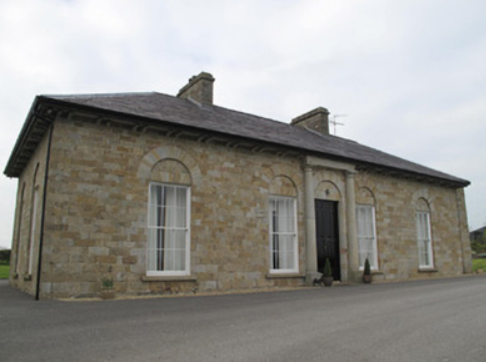
|
| Coolnacarte | Marked on the 1st edition 6 inch Ordnance Survey map (1836), this building is named Coolnacarte Lodge on the 25 inch map (surveyed 1908). The Ordnance Survey Field Name Book states that Coolnacarte was ‘the property of W. Glascock Esq whose embarrassment has thrown it into the courts of Dublin; who appointed Mr Samuel Martin agent’. In the mid-19th century it was valued at £13, occupied by the Reverend Thomas Gartlan and held from Richard Henry. In 1906, William Henry M.D. was resident, when the buildings were valued at £10. The house is extant. | |
| Clinkeehan | Clinkeehan House is marked on the 25 inch Ordnance Survey Map (surveyed 1908). A house in this townland was valued at £10 in the mid-19th century and was occupied by Robert Armstrong who held it from Robert L. Ellis. Members of the Armstrong family were resident in the early 20th century. This house is extant. | |
| Green Cottage | This house is marked on the 1st edition 6 inch Ordnance Survey Map (1836) and on the 25 inch map (surveyed in 1908), it is named Green Cottage. It was the home of the owner of the nearby mill, James Knight in the late 1850s who held it in fee. The buildings were valued at £14. In 1876, Luke Knight owned 118 acres in county Monaghan. Members of the Knight family continue to reside there in the first decades of the 20th century. Corcummins borders the Hilton Demesne. | |
| Tullaghan | The ruins of Tullaghan House are marked on the 1st edition 6 inch Ordnance Survey map (1836). It was located on the estate of Lord Rossmore. Lewis writes in the 1830s that Tullaghan belonged to the Reverend Sir Thomas Forster Bart. ‘whose family formally resided here’. By the time of Griffith’s Valuation a herd’s house had been erected close by. It is named Tullaghan House on the 25 inch map (surveyed 1908). | |
| Carrowbarra House | In 1798 ‘Carrowbarragh’ was associated with William Campbell an attorney-at-law who immigrated to Canada. In the 1830s Lewis records Carrowbarrow as the home of the Reverend Michael Fox Dudgeon who married Mary Moore of Moore Fort, Ballymoney, Co Antrim. Later he was vicar of Cratfield, Surrey. Henry Dudgeon occupied a house valued at £1.10.0. in Carrowbarra Island at the time of Griffith’s Valuation. He held the property from Owen B. Cole and Olivia Lucas. Owen B. Cole and Olivia Lucas were the lessor of the townlands of Carrowbarra and Carrowbarra Island. Mary Johnston occupied a house valued at £6 in Carrowbarra townland in the 1850s. A substantial house named Carrowbarra House is marked on the 25 inch map in Carrowbarra Island. | |
| Bushford | Humphry Thomson was living at Bushford in the mid-18th century. In 1814 Henry Thomson is described as resident at Bushford by Ambrose Leet. 'Robert Thompson' was the occupier holding the property in fee from the 1830s at least. The buildings had a rateable valuation of £5 at the time of Griffith's Valuation. [His son] Colonel Robert Thomson was resident in a new building on the other side of the road in the early 20th century. The new house (H657179) had a rateable valuation of £60 in 1906. His widow, Elizabeth Catherine, and her two daughters lived there in 1911. There were two substantial houses in Clossagh Beg by this time, one inhabited at the time of the censuses, by John Forster and later Joseph Ferris Forster and the other by the Thomsons. Walford's (1918) records Robert George Thomson, only son of Major Frith Thomson and nephew of Lieut. Col. Robert Thomson, died 1911, of Bushford. | |
| Leggykelly Cottage | Named on the first edition six inch Ordnance Survey map (publ. 1837), this house was occupied by Theophilus Thompson and held from the Reverend E.B.W. Venables in the 1850s. Its rateable valuation was £5. An extended building now occupies the site. | |
| Redhill House | The Whyte family were resident at Redhill from the 17th century. The first edition Ordnance Survey map (publ. 1837) marks a building in ruins which was the original castle. A house was built to the north east. The Ordnance Survey Field Name Book states that Redhill lately belonged 'to Mr White now in France, estate in Chancery, executors Mr Boyd of Cootehill and Col Clements'. The house 'is a small tho' convenient building with out-houses, the ancient castle in ruins, destroyed by fire 40 years ago.....The house is unoccupied except by a care taker’. Following the death of Francis Melville Whyte in 1833, Redhills was inherited by his niece Georgina Mary Enderby. She married the Reverend Edmund Burke Venables in 1847. Named on the first edition Ordnance Survey map (publ. 1837), Redhills was the residence of the Reverend E.B.W. Venables at the time of Griffith’s Valuation. Valued at £8, he held it in fee. Redhills was the home of the Reverend Arthur Thellusson Oddie in 1905 when he assumed the name and arms of Whyte Venables. In 1906, Georgina Whyte Venables is recorded as occupant when the mansion house was valued at £53.10.0. A building still stands on this site and the gate lodge survives. |

|
| Ballyhaise | Ballyhaise built for Colonel Brockhill Newburgh, design attributed to Richard Castle but more likely Sir Edward Lovett Pearce, early 18th century. About 1800 sold to Williamm Humphrys who added two storey wings to the building. Lewis describes the house in 1837 as ‘a spacious mansion, with an elevated front curiously ornamented with arches’. It was the seat of William Humphrys. In the 1850s the buildings had a rateable valuation of £110. Since 1905, Ballyhaise has been an agricultural college. |
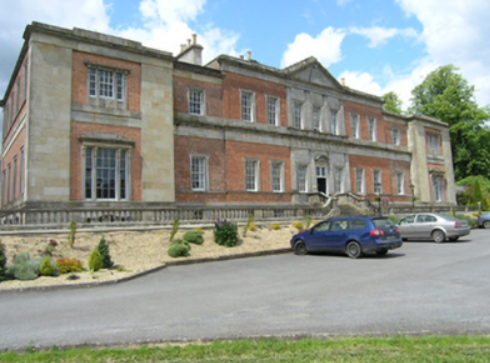
|
| Lisnagowan House | Built as a dower house for the wife of William Humphrys who bought Ballyhaise about 1800. In the-mid 1830s occupied by Mrs Humphreys as stated by Lewis. Griffith’s Valuation records William Humphrys as the occupier, holding the property in fee. Still the home of a member of the Humphrys family in 1901. Richard Weir and his wife occupied the house in 1911 holding it from Nugent W. Humphrys. Damaged by fire in the early 20th century, the building is now a ruin. See http://cvn049.blogspot.ie/2016/03/lisnagowan-house.html for photo. | |
| Bellamont Forest | A red brick house, designed by Sir Edward Lovett Pearce c 1728 for Thomas Coote, younger son of Richard, Baron of Collooney. Originally known as Coote Hill but its name changed in 1767 to Bellamont Forest following Charles Coote’s elevation to the title Earl of Bellamont (2nd creation). Bellamont Forest was inherited by Charles Johnston Coote in 1800. He was one of the illegitimate children of the Earl. Bellamont Forest was occupied by Richard Coote in the mid-19th century. He held it in fee and the buildings had a rateable valuation of £50.10.0. It was sold by George Coote in 1875 to Edward Smith (K.V. Mulligan), who made a fortune out of coal. Edward Patrick Dorman Smith was the eldest son of Edward Smith and his wife Isabella Cullen and succeeded to Bellamont Forest in 1880. In 1906, Captain E. P. Smith was the occupant of the mansion house with a rateable valuation of £61.5.0. The property remained in the hands of the Smith family until the 1980s when it was purchased by an Australian, John Coote, a descendant of the former owners who spent many years renovating the house. John Coote died in 2012 and the house was sold in 2015 to an American couple. | |
| Lanesborough Lodge | This house was built after the first edition six inch Ordnance Survey map (publ. 1837) was compiled. The National Inventory of Architectural Heritage states that the original house was extended by Henry Cavendish Butler in the 1840s. In the 1850s it had a rateable valuation of £38 and was owned and occupied by the Earl of Lanesborough. The lodge was situated in Quivvy Wood located on a peninsular of land that jutted out into the River Erne, north east of Belturbet. By 1906, its rateable valuation had risen to £52. It was burnt in the early 1920s and still stands as an impressive ruin, see archiseek.com | |
| Lislin House | Lislin House, situated close to the bank of the Annalee River, is named on the first edition six inch Ordnance Survey map (publ. 1837). The building is believed to date from the late 18th century and came into the possession of the Battersby family through marriage. At the time of Griffith’s Valuation Robert Battersby was the occupier and owner. The rateable valuation of the buildings was £6. Home of the James and Agnes Simons at the beginning of the 20th century, now a ruin. | |
| Rakenny/Rathkenny House | A two storey square block of a house built in the late 1820s for Theophilus Lucas-Clements to the design of William Farrell. According to Bence Jones it was built with money given to Theophilus ‘by his cousin, Harriet, whose father, Captain John Clements, made a considerable fortune commanding a ship in the East India Company service’. A previous Clements home had been located on the other side of the Annalee River, of which the 18th century demesne and tea house survive and a walled garden dating back to 1695. Rakenny is the name of the house on the first edition six inch Ordnance Survey map (publ. 1837) but the house is commonly known as Rathkenny. It had a rateable valuation of £48.5.0. in the mid-19th century. Rathkenny House continued to be the home of the Lucas-Clements family until it was put up for sale in 2012 (Irish Times, 10 May 2012). | |
| Wood Lodge | Wood Lodge was the home of Elizabeth Anne Clements and her husband, the Reverend Edward Lucas, at the end of the 18th century. This house was situated in the Rakenny demesne to the south of the new Rathkenny house built in the 1820s by their son. It is named on the first edition six inch Ordnance Survey map (publ. 1837) when it is shown as a square block of four buildings surrounding a court yard. Valued at £10.5.0. at the time of Griffith’s Valuation, it was occupied by William Armstrong (Lewis records J. Armstrong as proprietor of Woodford, parish of Enniskeen). The building was reduced in size as shown on the 25 inch map. The Lodge is no longer extant. | |
| Annaghlee House | This house faced the nearby Annalee River. Described by Bence Jones as a ‘mid-c18th red-brick house attributed to Richard Castle’. It is named on the first edition six inch Ordnance Survey map (publ. 1837). In 1806 occupied by Mr Willis (Matthew Sleater) and in 1814 ‘Annalea, Coothill’ was the home of Michael Murphy. Lewis in the 1830s also records ‘Annilea’ as the residence of M. Murphy. John Marsden held the property valued at £12.10.0. from Robert Burrowes in the 1850s. A large B & B complex now occupies the site. | |
| Ashfield Lodge | Described by Bence Jones as a late Georgian house, now demolished. The house faced north west and looked onto the Dromore River. It was the home of a branch of the Clements family until 1952 when sold. Colonel Henry Theophilus Clements was the occupant in the mid-19th century holding the property in fee. The house was valued at £44 for rates. | |
| Retreat/Faybrook | Retreat, set in a small demesne close to Dromore River with a corn mill nearby, is named on the first edition six inch Ordnance Survey map (publ. 1837). It appears to have been a Bredin home in the early 1850s. By the time of Griffith’s Valuation it belonged to Thomas Fay and was occupied by James Boyle. The rateable valuation was £10. The house reduced in size, or possibly a new structure, was renamed Faybrook. It is marked on the 25 inch map and is still extant. | |
| Drumsheil House | Drumsheil was originally part of the Ashe estate which was sold to the Clements family. It is named on the first edition six inch Ordnance Survey map (publ. 1837) and was situated close to a lough of the same name. The house, with a rateable valuation of £8, was occupied by William Caldwell in the mid-19th century and held from the representatives of Charles Adams. The Caldwell family were still resident in 1911. The site is now a green field. | |
| Tullyvin House | Tullyvin was originally a home of the Moore family. In 1814 the Reverend Benjamin Adams was resident. It was inherited by Maxwell Boyle, who according to the National Inventory of Architectural Heritage rebuilt the house circa 1820. At the time of Griffith’s Valuation the house was vacant but in the possession of Maxwell W. Boyle. It was valued at £30 for rates. In 1876, Tullyvin was the home of Mrs Charlotte Townley, the owner of over 2,000 acres in the county. The house had a rateable valuation of £30.10.0. in 1906 and Maxwell J. Boyle was recorded as the occupier. This house is still a fine residence. |
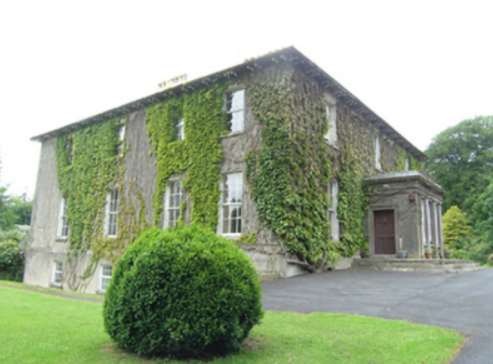
|
| Fort Henry | In 1814 Fort Henry, Cootehill, was the home of the Reverend John Moore. Valued at £4 in Griffith’s Valuation it was occupied by Elizabeth J. Stinson and held from Colonel Henry T. Clements. Reduced in size on the 25 inch map, a building still stands on this site. | |
| Fort William/Errigal | Situated on the north side of the Annalee River, Fort William is named on the first edition six inch Ordnance Survey map (publ. 1837). By the time of Griffith’s Valuation it was owned and occupied by Samuel Moorhead. The rateable valuation was £25. The house was extended and renamed ‘Errigle’ as shown on the 25 inch map. In 1906, it had a rateable valuation of £40 and was occupied by Thomas H. Moorhead MD. It now functions as the Errigal Country Hotel. |

